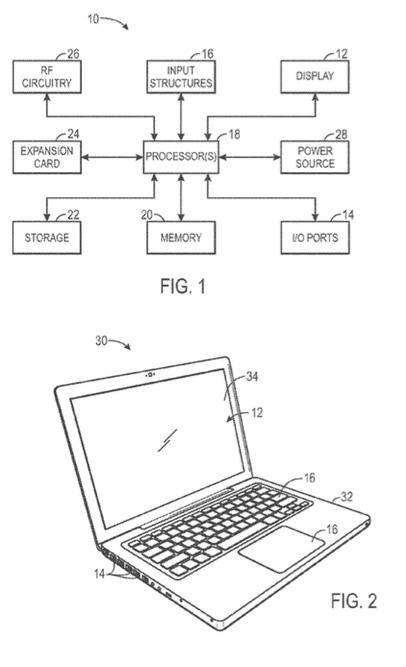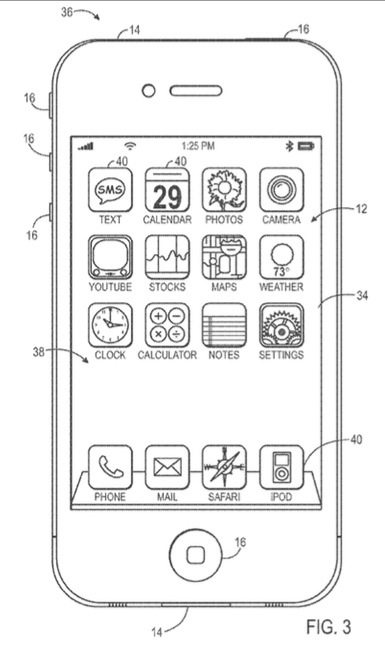Apple continues to work on methods of improving the screens of its Mac and iOS devices. A company patent (number 20120287605) for a display with color control has appeared at the U.S. Patent & Trademark Office.
Techniques are provided for controlling the colors of reflected light out of a display surface in a display device, such that display discoloration (e.g., green tinting) may be reduced, particularly when the display is operating in bright ambient environments. In one embodiment, a display device may include a color filter black mask layer having an arrangement of red, green, and blue color filter areas, where the red and/or blue color filter areas are substantially greater than the green color filter area.
In some embodiments, the display device may include red and blue color filter pigment resin areas which may be disposed over the reflective areas to increase the overall amount of red and blue light that will be generated by reflected light to result in a total light reflection that is substantially neutral in color. Therefore, in some embodiments, the amount of external light which reflects through red and/or blue color filters may be controlled (e.g., increased) to result in displayed images having a substantially neutral color.
Here's Apple's background and summary of the invention: "Liquid crystal displays (LCDs) are commonly used as screens or displays for a wide variety of electronic devices, including such consumer electronics as televisions, computers, and handheld devices (e.g., cellular telephones, audio and video players, gaming systems, and so forth). Such LCD devices typically provide a flat display in a relatively thin package that is suitable for use in a variety of electronic goods.
[0004] LCD devices typically include multiple layers, including a backlight, an LCD panel having a pixel matrix configured to selectively modulate the amount and color of light transmitted from the backlight, and a color filter layer which enables specific colors of light to be emitted (e.g., red, green, and blue). LCD devices also typically include one or more optical layers from which external light (i.e., ambient light, such as from sunlight, lamplight, etc.) may be reflected. Due to the reflection of external light, LCD devices may be readable under direct sunlight, even if the backlight is not actively transmitting light through the LCD device.
"More specifically, external light may propagate through the layers of the LCD devices to be reflected by one or more optical layers out of the LCD device. The reflected external light may form images on the display surface as it passes through the liquid crystal panel and color filter layer. However, the reflection of external light may sometimes contribute to undesirable display effects. For instance, reflected external light may contribute to a green tint on a display surface, particularly in brightly lit environments."
The inventors are Cheng Chen and John Z. Zhong.
Along the same lines is patent number 20120287378 -- also invented by Chen and Zhong -- for controlling reflection in LCD devices. In one embodiment, a prism mirror and a diffuse reflector are positioned between the bottom polarizer and the liquid crystal layer of a pixel to control the polarization of reflected light transmitted through the display panel.
The diffuse reflector diffuses light towards the prism mirror, and the prism mirror affects the polarization of the light. When the pixel is on, the liquid crystals of the liquid crystal layer may shift the polarization of the reflected light such that it can be transmitted through the top polarizer.
When the pixel is off, the liquid crystals may not substantially shift the polarization of the reflected light, and the reflected light may be polarized to be absorbed by the top polarizer. Accordingly, reflected light is substantially transmitted through the pixel when the pixel is on, and substantially absorbed by the top polarizer when the pixel is off.














